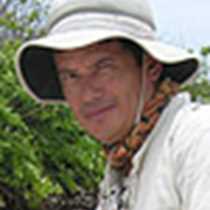Bartolomé & Santiago Islands
Located at the central part the archipelago, Bartolomé and Santiago are two very famous islands in Galápagos, because of their beautiful geological landscape and human history. Once a hideout for pirates and a stop on Darwin’s itinerary, Santiago, whose English name is James, is the fourth largest of the islands, in contrast with Bartolomé, one of the smallest.
Early in the morning, we landed at Bartolomé. The disembarkation was a little complicated because the waves were breaking against the small dock, but after a few minutes we were heading up to the summit, and walking along the new wooden path recently built by the Galápagos National Park Services. The weather conditions were excellent. From the top, our guests observed the remains of the last eruption on Santiago Island, which occurred in 1897. The most famous formation on it, Pinnacle Rock, is considering one of the most famous in Galápagos. After breakfast, we landed again at Bartolomé, but this time at the beach with all our snorkeling equipment. Just before we landed, we observed a group of playful penguins standing on the rocks and a group of sea lions playing in the waves.
At twelve o’clock, we started sailing along the northern face of Santiago Island. It could not have been more than half an hour when we spotted a group of bottle nose dolphins jumping close to our ship. We enjoyed watching them and took many pictures, astonished at how friendly these beautiful creatures were. Finally, we arrived to our destination, Puerto Egas or James Bay. The sea was choppy and we had to disembark carefully but finally we landed and began our visit along the seashore. We observed marine iguanas larger than yesterday’s, many species of migratory birds and at the grottos, a group of fur sea lions sleeping indifferently. It was late, the sugar loaf hill and the highlands looked cloudy. We felt a light rain, we knew it was time to return home to National Geographic Islander.
Call +1.800.397.3348 or contact your travel advisor




